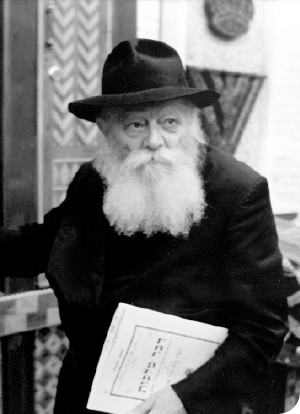Beis Moshiach presents the maamer the Rebbe MH”M delivered on Yud Shvat 5719, in accordance with the custom established by the Rebbe to review each year a section of the Rebbe Rayatz’s Hemshech “Basi L’Gani” of 5710. • This year we focus on the ninth section of the profound and foundational Chassidic discourse. * Sections 3 and 4 (in part) of 9
Translated by Boruch Merkur
 THE SOURCE OF THE ILLUSION OF INDEPENDENCE
THE SOURCE OF THE ILLUSION OF INDEPENDENCE
3. But this difference itself requires further explanation: Why are earthly foundations different than their spiritual counterparts?
The answer emerges from the analysis of the concept of yesh ha’nivra, the created being. A created being perceives its existence as independent, having no preceding cause, G-d forbid. The reason for this illusion is because the source of the creation of yesh ha’nivra is Atzmus, G-d’s core and essence. As explained in Igeres HaKodesh (siman 20; 130a, end, ff.), only Atzmus has the power to create ex nihilo, from absolute nothingness [giving the yesh ha’nivra the impression that it too has no preceding cause]. Atzmus’ existence is independent and inherent to Its being; It has no preceding cause, G-d forbid.
In the Future Era, when the true and inner dimension of everything will be revealed, the real source of yesh ha’nivra will be revealed within it, and that is the yesh ha’amiti, the true existence, which has no cause [namely, G-d].
The latter sheds light on the principle “niutz t’chilasan b’sofan – their beginning is wedged in their end” (Seifer Yetzira 1:7): Specifically in “their end” is wedged the “beginning-ha’t’chila,” a term for “origin” that transcends the concept of “head-rosh.” This lofty origin, Atzmus, is present specifically in the end, in the yesh ha’gashmi, the lowest of all dimensions of reality. The lowest realm is the dwelling place for G-d’s core and essence, which will be revealed in the Future Era. The truth is that even now [before the true and complete Redemption] Atzmus resides in the lowest realm [albeit imperceptibly].
Thus, in the physical realm, yesh d’Asiya, the foundation is specifically below the rest of the structure, and upon this earthly foundation the Supernal worlds are built, whereas this arrangement is reversed in the Heavenly realms. Tanya explains that G-d’s ultimate, inner intent is not the Supernal worlds. The spiritual realms constitute a mere ray of Divinity, and their whole purpose is to accommodate the manifestation of the Divine inner intent specifically in the physical world. But the greater the light and radiance, the more exalted and brilliant is its source. Thus, On High, the amudim-pillars stand at the greatest heights, for their foundation and strength is above, and from there G-dly energy is drawn down.
THREE ANALOGIES FOR GREATNESS
4. Further explanation is required as to why the yesh ha’amiti is present specifically in the yesh ha’nivra, not in spirituality. For at first glance it would seem to have been necessary for the yesh ha’amiti to reside in the spiritual dimension of any given thing or experience, to reside in spiritual matters. Indeed, for this reason the Heavenly realms are called Supernal, for they reflect a lofty level of spirituality.
The explanation is found in the teachings of the Mitteler Rebbe, nishmaso Eden, who provides three analogies to illustrate the concept of “The higher something is the lower it descends, invests itself within, and is revealed in the lower dimensions.” The first mashal is of a powerful, brilliant light, the light of a torch that shines to great distances. For light to reach distant places, a powerful torch is needed. Thus, specifically at a distance, the power of a torch compared to a lesser flame is apparent; distance brings out the high and lofty source of the light. However, the light that reaches the great distance is much dimmer than near its source. Even a candle lit there shines brighter than the torchlight that reaches that distance. Nevertheless, it is specifically distance that demonstrates the power of the torch.
The second mashal is of a bucket filled with water. The bucket is filled to the rim and excess water overflows. Although the water that spills out is superfluous and small in quantity compared to the water in the bucket, the overflow indicates the fullness of the bucket. The same applies to wisdom: It is specifically in novlos chochma – wisdom expressed in lower dimensions, such as the mundane talk of sages – that the depth of the sage’s wisdom is apparent.
And the third mashal is the drawing down of a physical seminal drop in conception, leading to the birth of a child, a process that [although it begins at the level of thought] gives rise to a new, different mehus [a physical child with the potential to develop its own consciousness]. In contrast, the transference of ideas, a spiritual hashpaa, cannot conceive new offspring. The limitation of communicating ideas to another is that it is dependent upon the listener to possess intelligence in his own right. Only then will the ideas articulated by the speaker be understood. Thus, physical reproduction has an obvious advantage over the communication of ideas in the sense that it conceives a new mehus [offspring, a child], a mehus that is different from the original mehus [the thought of the father].
(To be continued, b’ezras Hashem)